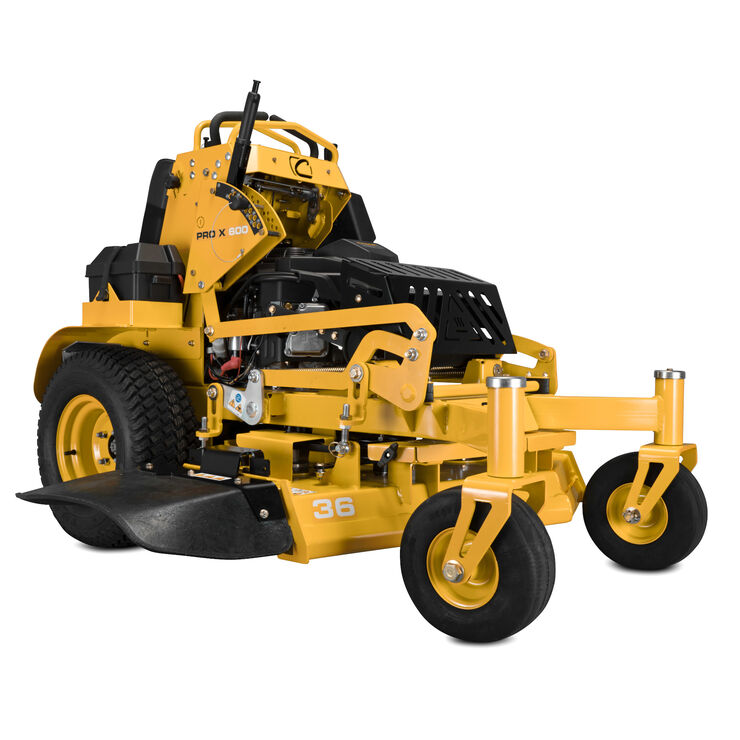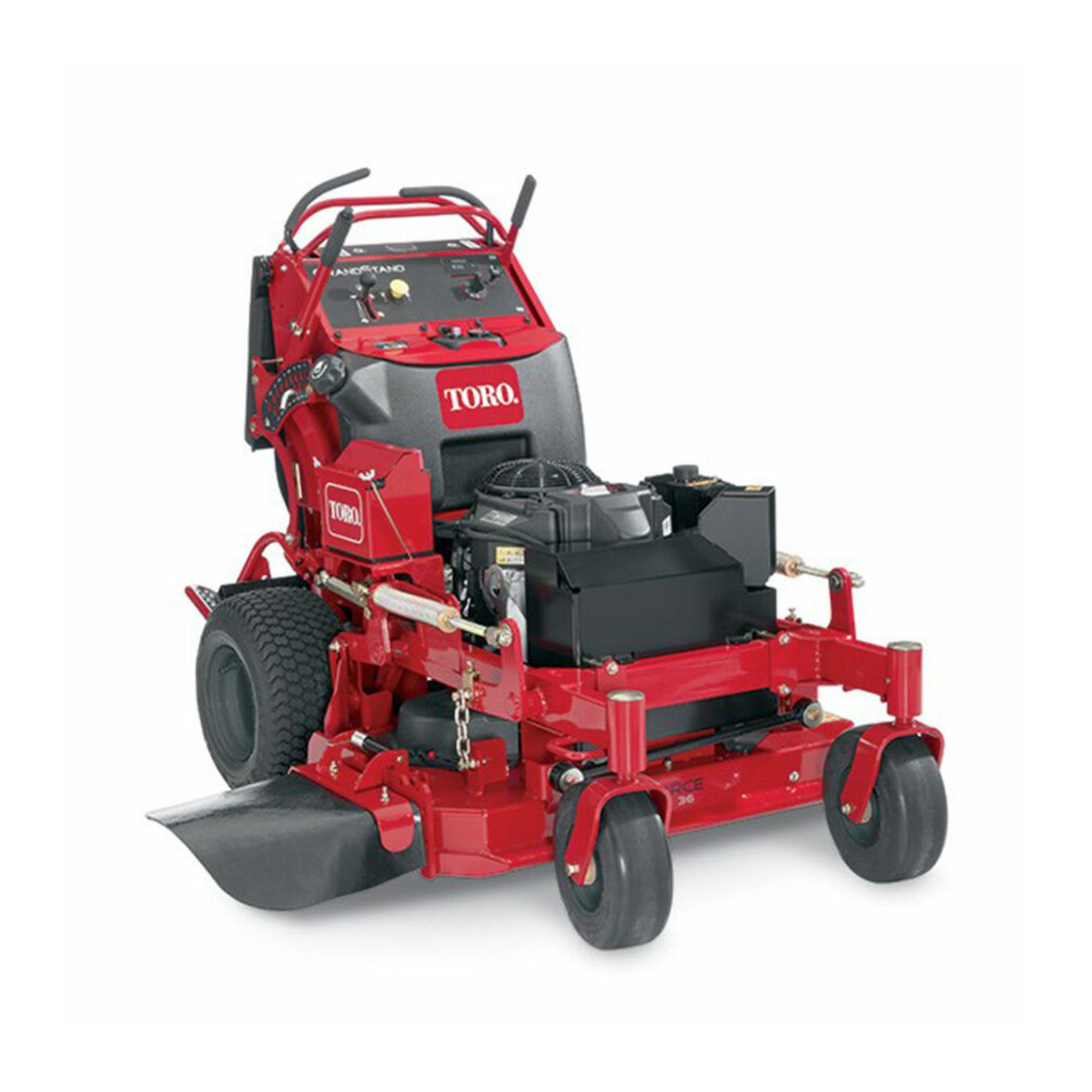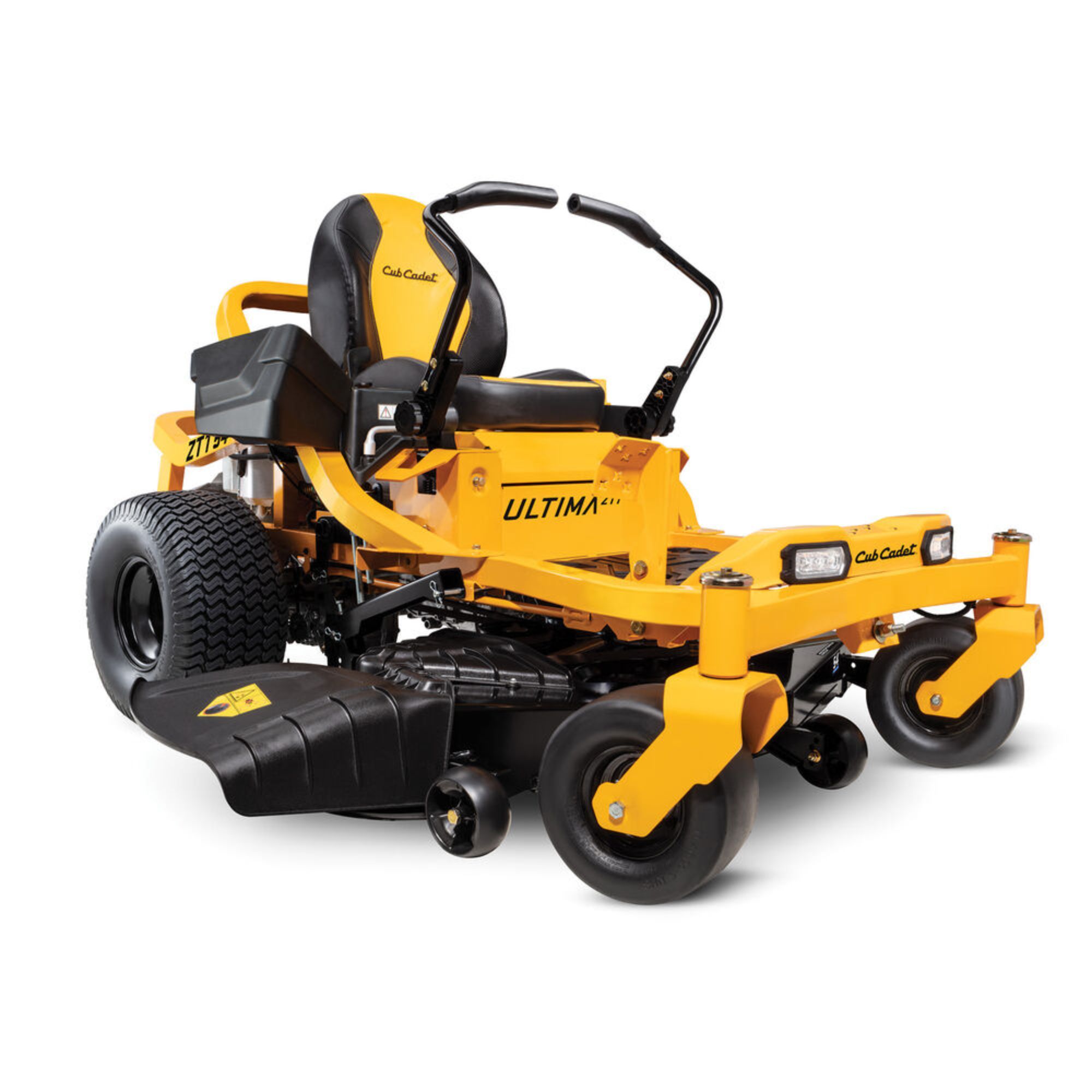Standing mowers vs riding mowers – a mowing expert reveals which is best
The pros use standing mowers, but the best cut comes at a high price
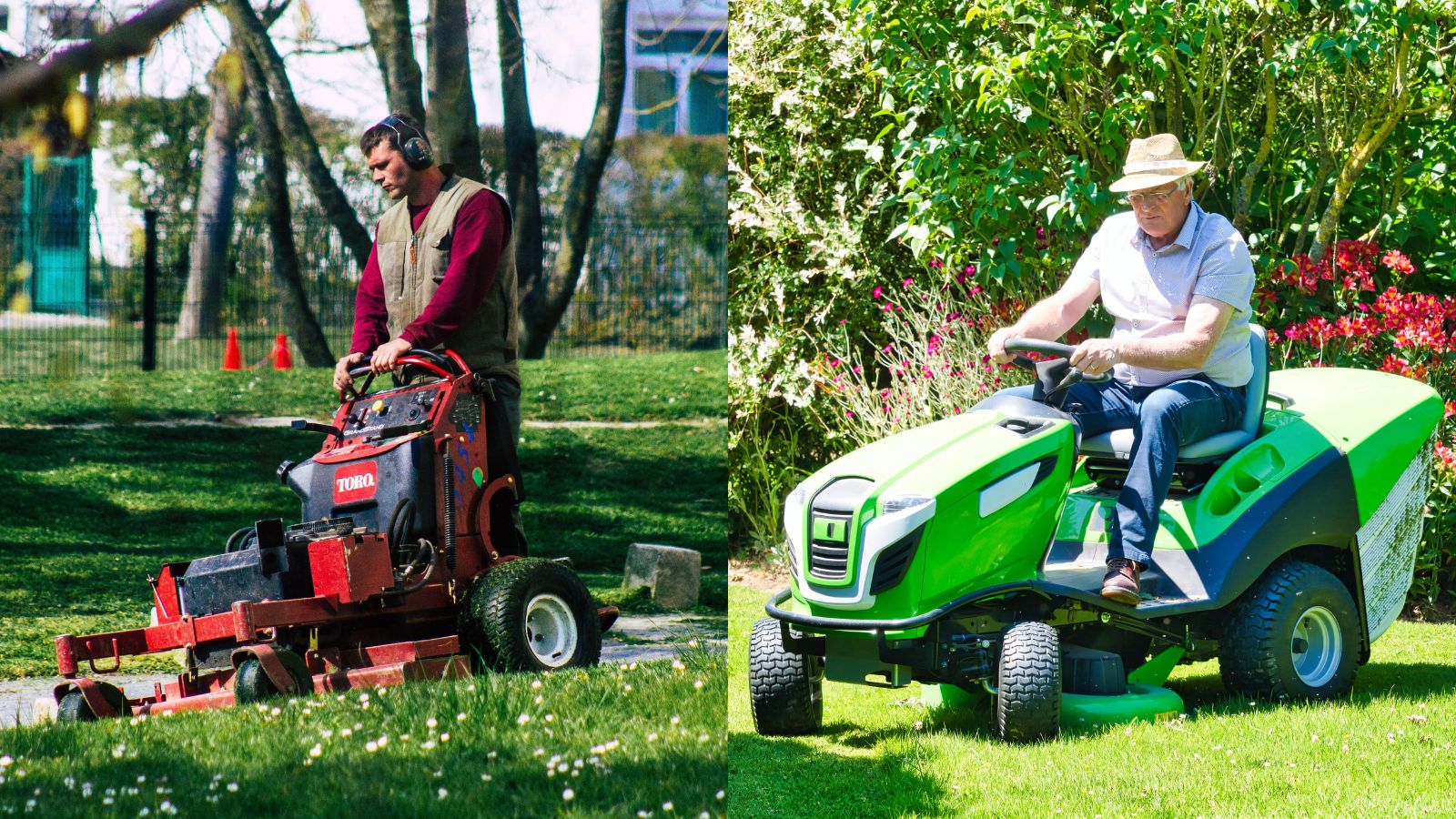

When it comes to ride-on mowers, you usually only have two types to consider. Tractor mowers and zero-turn mowers dominate the market.
But while debate rages about the benefits of zero-turn vs tractor riding mowers, you have another option on offer. If you've ever hired a landscaper, you might have noticed that they use a standing mower rather than one you sit on.
Standing mowers claim to be lighter, faster, and more precise than traditional riding mowers. I spoke to a lawn mowing expert to see if standing mowers really are the best lawnmowers around. While they give the best, fastest cut of any mower, there are some significant drawbacks to know before you buy.
What are the benefits of a standing mower?

Standing mowers are exactly as they sound. You operate a standing mower from a platform rather than sitting on a seat, and there are several benefits to this.
Mowing expert Gene Cabellero told me that 'standing mowers provide great maneuverability and visibility, ideal for landscapes with many obstacles or tight spaces.' Because they have a small body compared to ride-on mowers, they have a much tighter turning circle. It also means that they're lighter, so they tend to be faster than seated mowers.
Altogether, this makes them much better at mowing around trees or along winding paths. Even without the small turning circle, the simple fact that you're standing up means you have a much better view of the lawn, making it easier to mow.
Gene adds that 'Standing mowers also allow for quick transitions between tasks, saving time when frequent stops are needed – especially to pick up trash or debris.' This feature is most useful for professional landscapers who need to hop in and out of the cab. It's why you may have seen these mowers listed as 'commercial' lawnmowers. However, that's helpful in a domestic setting too. If a branch has fallen on the lawn or your kids have left a toy on the grass, you can quickly remove it.
On top of that, standing mowers are often better for tackling inclines. Because you're standing up, you can shift your weight and lean the hill, resulting in a better, easier mow.
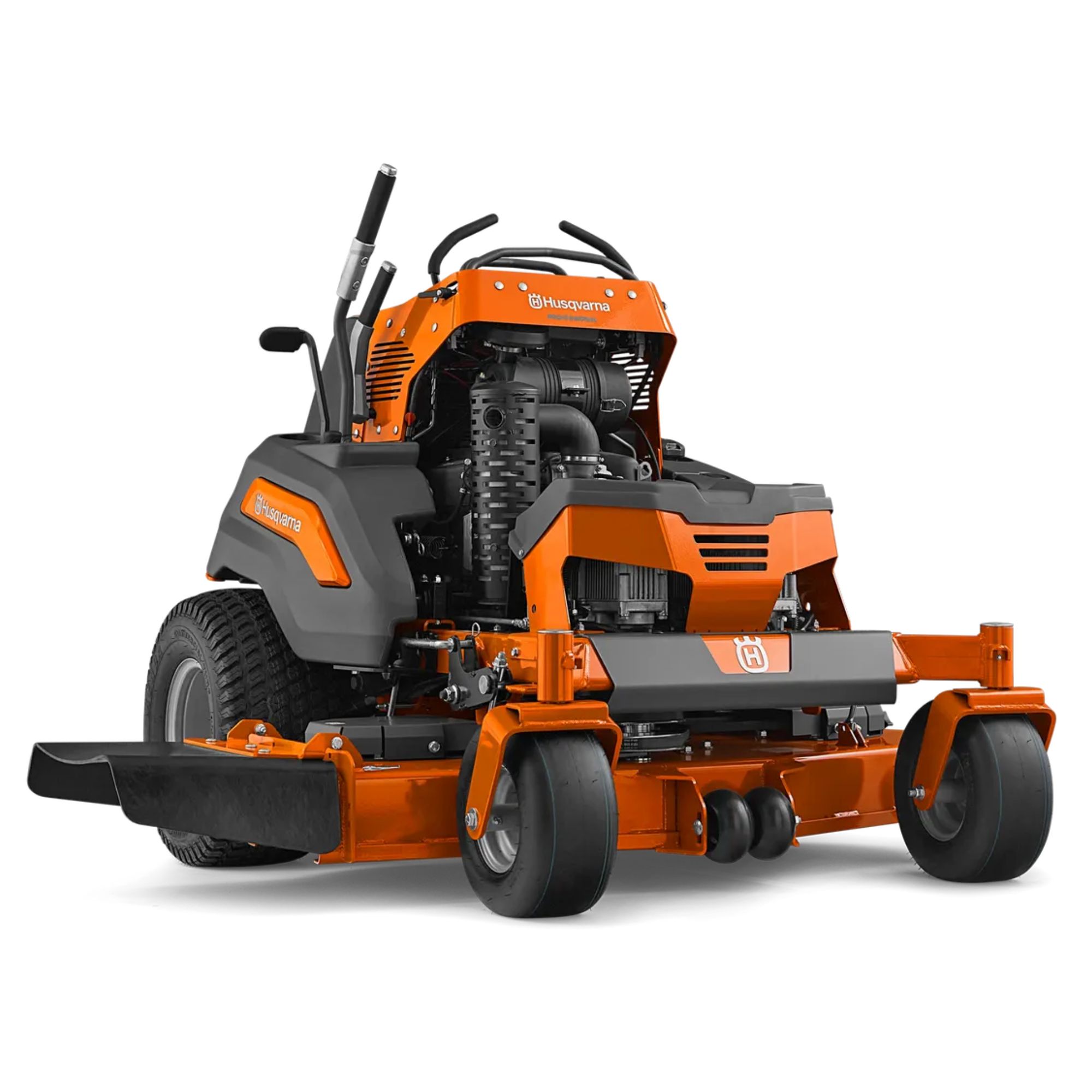
A pro landscaper says this mower cut his work time in half. It's fast, nimble, and offers a precise cut.

Gene is a passionate entrepreneur dedicated to revolutionizing the lawn care industry through technology and innovation. Gene has 25 years of experience in the landscaping industry and has owned both types of mowers.
What are the drawbacks of a standing mower?

There's one glaring drawback with a standing mower – it's uncomfortable. Mowing expert Gene Caballero says that 'standing mowers can be less comfortable for extended use compared to ride-on mowers, especially on rough terrain.' Not only is it uncomfortable to stand on the mower for long periods, but unlike a ride-on mower, there's little suspension or padding, so you feel every jolt as the mower goes over the ground. If you have back or knee problems, you'll find this type of mower pretty painful.
Unlike tractor ride-on mowers, you can't always bag up the grass with a stand-on mower. Even those that come with grass collectors have small capacities and you need to empty the collector more often than a ride-on mower. Other models mulch straight onto the grass. That's great for the health of your grass, but it means a lot of grass clippings blowing around, and if you kids like to play on your lawn it could mean that grass gets tracked back into your house.
Because standing mowers are often used by landscaping pros, they can be expensive – an extreme example is this Toro GrandStand Revolution 52 at Lawn Barn, listed at an eye-watering $34,000. More realistic models tend to be between $5,000-$10,000, which is still more expensive than the average tractor mower.
What are the benefits of a ride-on mower?
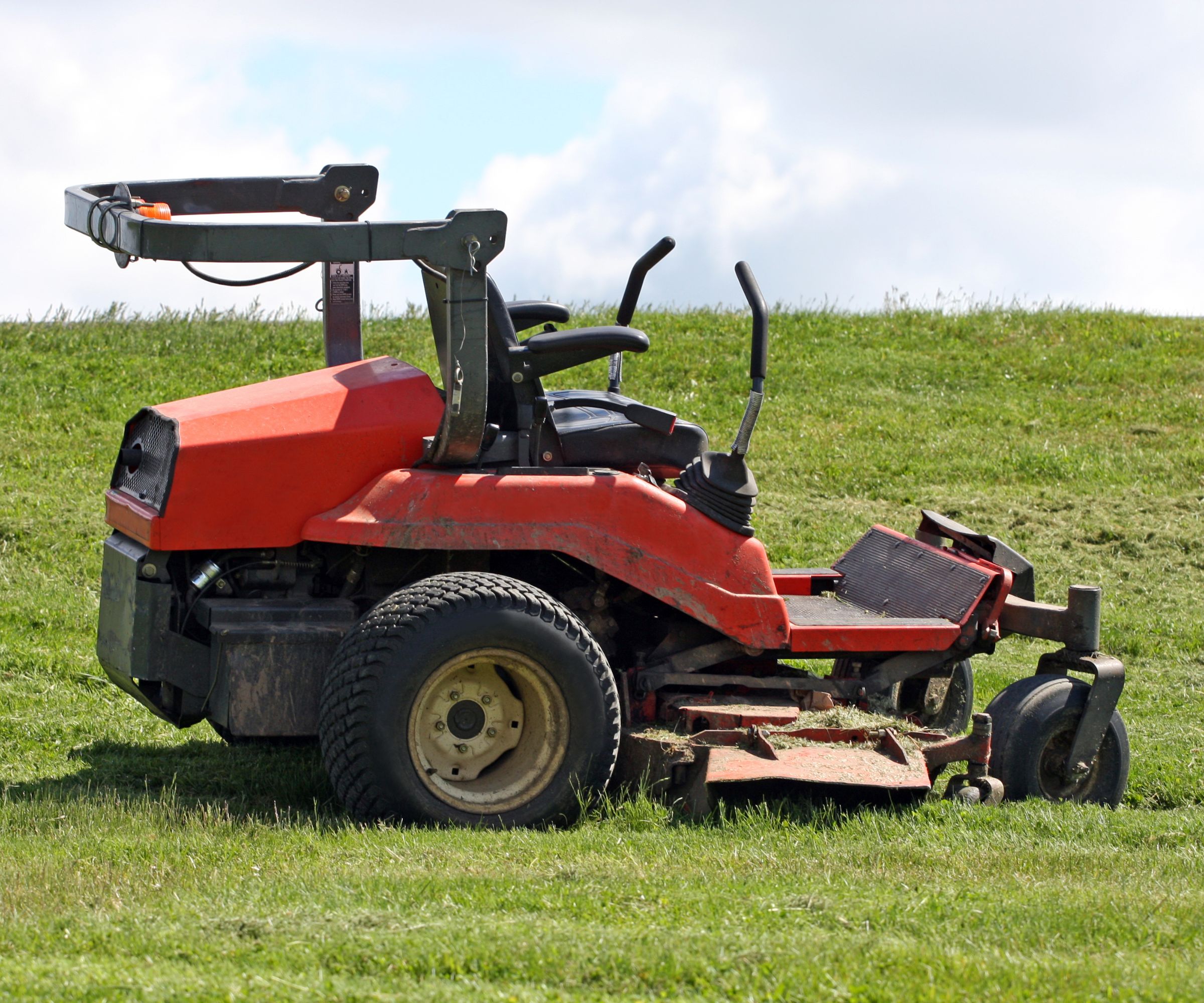
There are two main benefits to more traditional ride-on mowers. The most obvious is comfort. 'Ride-on mowers offer more comfort with better seating and suspension, suitable for larger, smoother areas,' says Gene Caballero. 'Unlike a standing mower, you're always sitting down on a ride-on, which is much more comfortable than standing up. On top of that, comfortable, ergonomic seats and suspension add a further layer of comfort. If you have problems with your back or legs, you'll be much more comfortable on a zero-turn or tractor mower. You even get cup holders in a ride-on mower, making for a much more relaxing job.
While tractor motors are less precise, they're much easier to use. Zero-turn mowers need a little learning curve, but they offer similar precision to a standing mower without the discomfort of standing up.
Tractor mowers can also be fitted with a huge range of different attachments. Most standing mower models don't support attachments, so they can only mow. Tractor mowers can be fitted with snow plows, aerators, lawn sweepers, and spreaders. You get a lot more for your money.
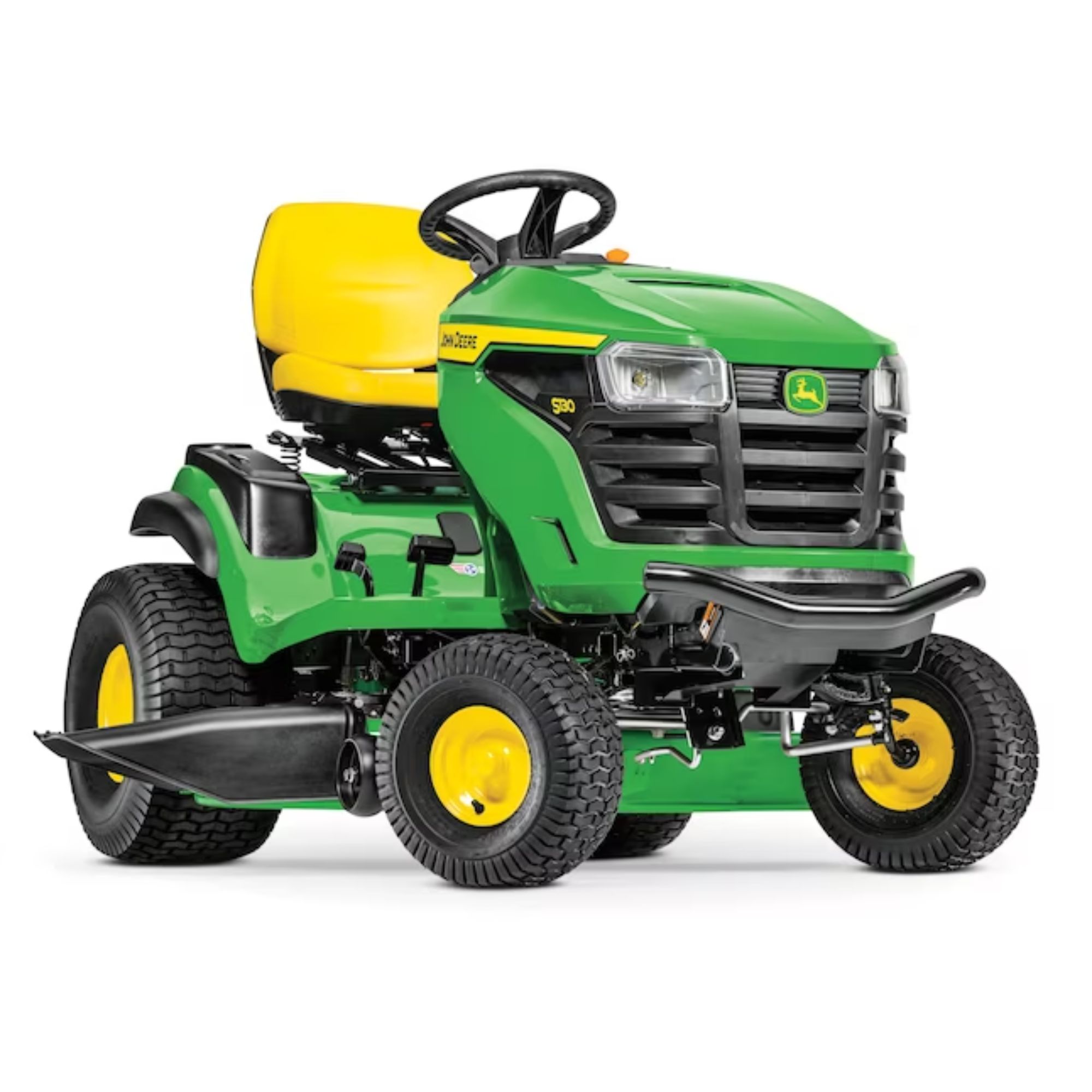
This American-made mower can tackle two acres. It offers a very precise cut, with 1/4 inch increments between 1-4 inches for a level, even lawn.
What are the drawbacks of a ride-on mower?
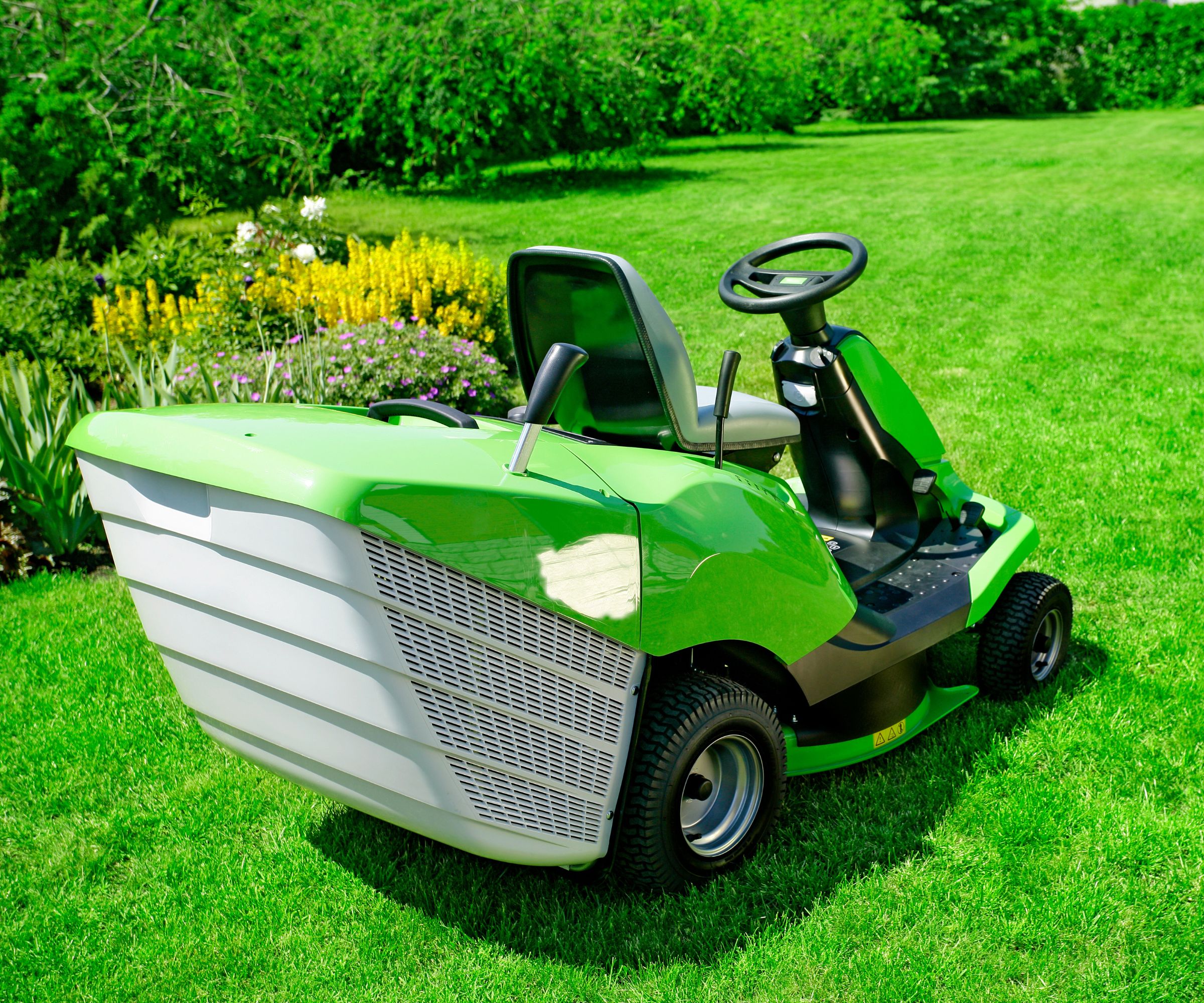
The big drawback with a ride-on mower is that it doesn't give as good a cut as a standing mower. 'The main drawbacks of riding mowers are their size and maneuverability in confined spaces,' says Gene Caballero.
Zero-turn mowers are similar to standing mowers in that both can turn on the spot, but a standing mower has a smaller body and better visibility, so it can cut much more precisely than a sit-on mower.
Lawn tractors are much worse than both types for making a precise cut because they can't turn on the spot. They also tend to have a smaller cutting deck, so it takes longer to mow the same area of lawn. On top of that, both types of ride-on mowers are hard to use on hills and inclines.
Riding mowers also take up more room in storage, so standing mowers are often a better choice for making sure there's room in your garage.
FAQ
Can you put stripes in a lawn with a standing mower?
You can make stripes in a lawn with a standing mower – you just need to buy a tow-behind lawn roller attachment.
The biggest drawback with standing mowers is that they're very expensive. In fact, if you have a small yard, it's not worth considering one of these. Learning the differences between riding mowers vs push mowers could save you thousands of dollars and a lot of storage space. If you have more than two acres, you need a riding mower; if you have fewer than two acres, all you need is a good push-behind.
Sign up to the Homes & Gardens newsletter
Design expertise in your inbox – from inspiring decorating ideas and beautiful celebrity homes to practical gardening advice and shopping round-ups.

As a gardens and lifestyle contributor, Alex makes sure readers find the right information to help them make the best purchase. Alex got his start in reviewing at the iconic Good Housekeeping Institute, testing a wide range of household products and appliances. He then moved to BBC Gardeners’ World Magazine, assessing gardening tools, machinery, and wildlife products.
-
 Plants never to grow next to fruit trees
Plants never to grow next to fruit treesExpert advice on which plants to keep away from fruit trees to encourage a healthy harvest
By Jacky Parker Published
-
 Martha Stewart's tips for arranging daffodils are unbelievably simple and effective – it's the only flower advice you need this springtime
Martha Stewart's tips for arranging daffodils are unbelievably simple and effective – it's the only flower advice you need this springtimeMartha shows us that we can create gorgeous bouquets of this seasonal flower by simply trimming the stems and placing them in specific vases
By Hannah Ziegler Published
-
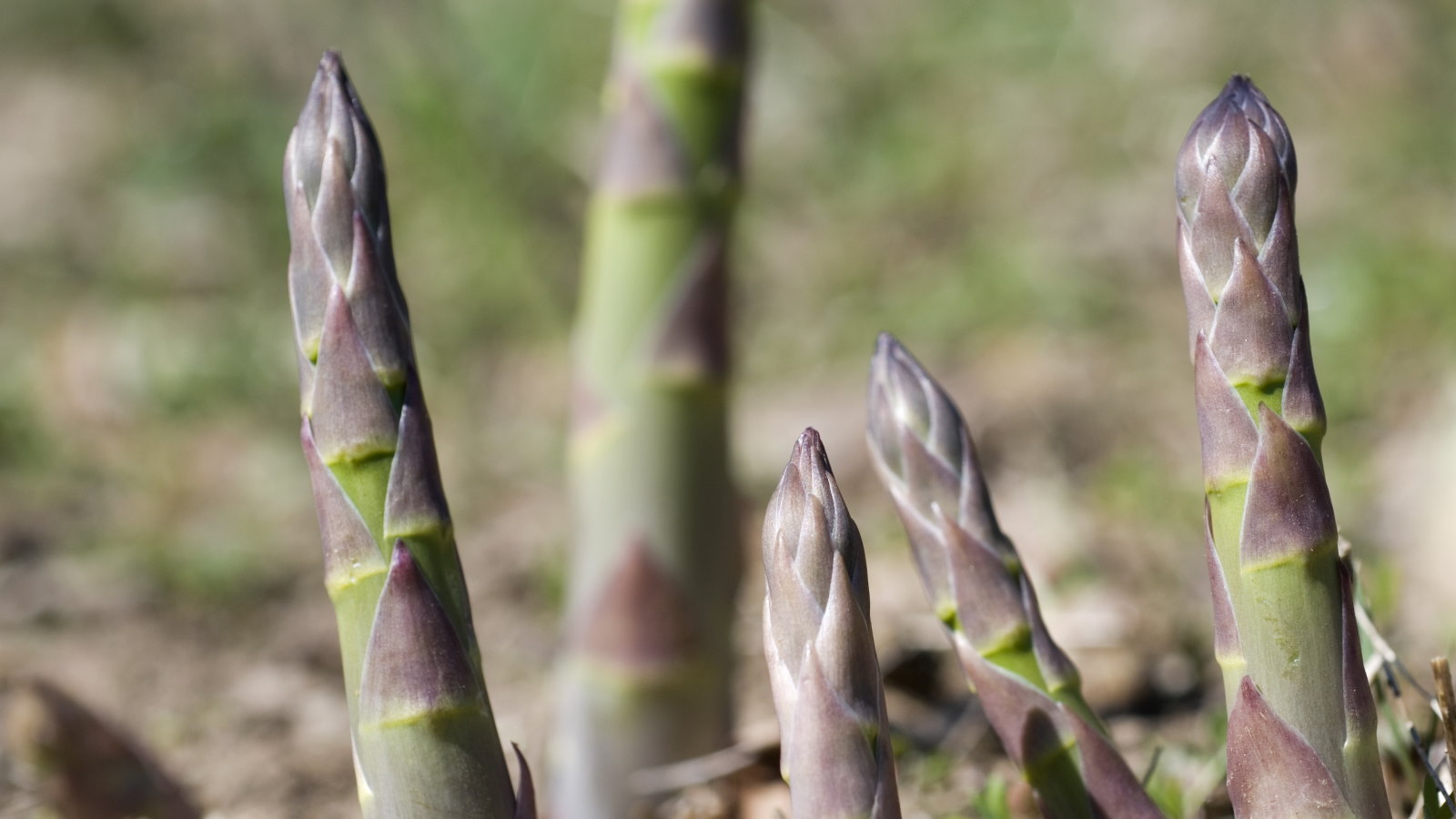 When and how to divide asparagus – expert tips to rejuvenate older plants for better yields
When and how to divide asparagus – expert tips to rejuvenate older plants for better yieldsDividing asparagus crowns is simple and rewarding, but you must get the timing right
By Drew Swainston Published
-
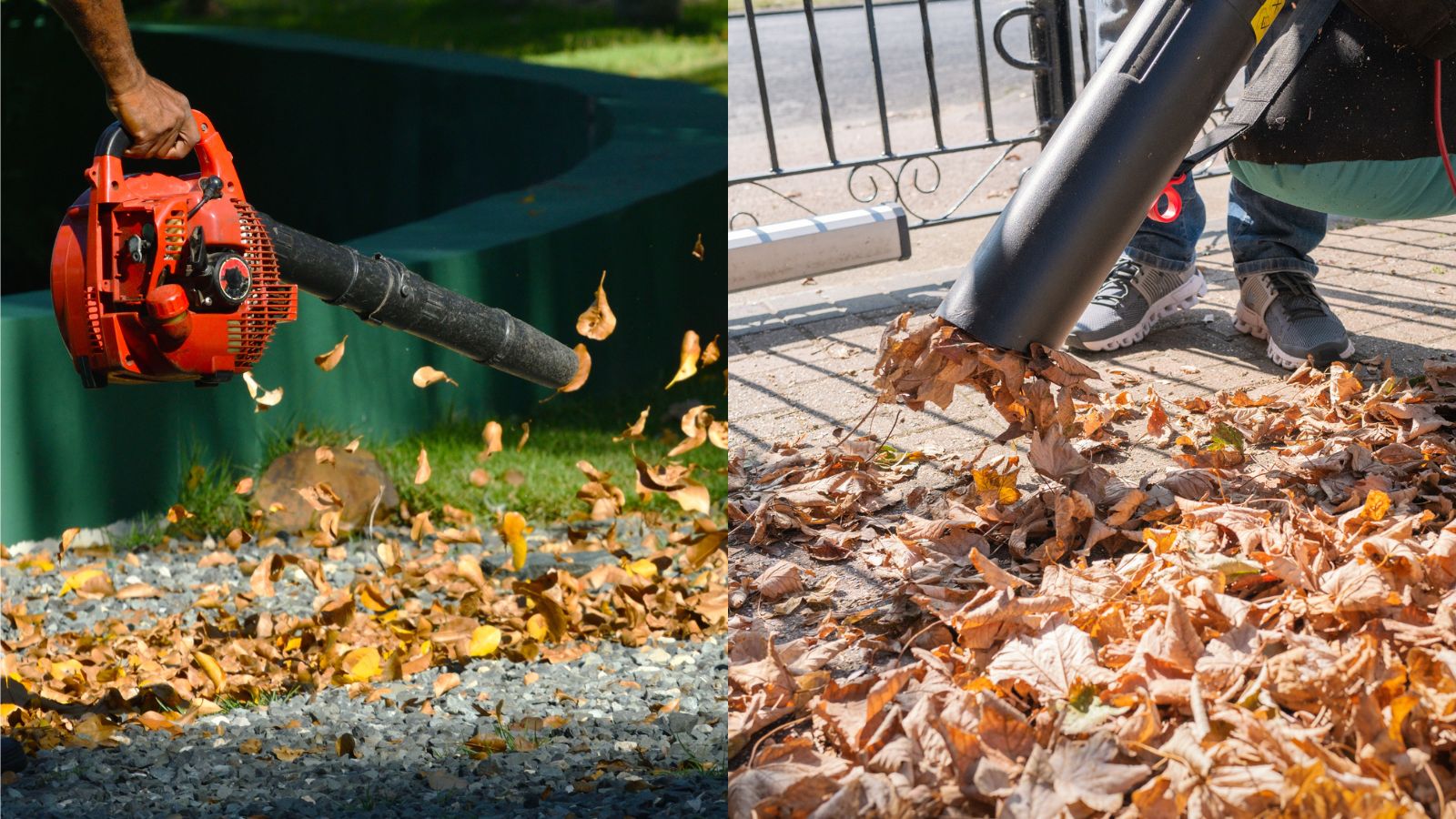 Leaf blowers vs leaf vacuums – which is best for your yard, and should you bother with either?
Leaf blowers vs leaf vacuums – which is best for your yard, and should you bother with either?It's not obvious which is best between leaf blowers v leaf vaccums. As a product tester, this is all you need to know about these controversial yard tools
By Alex David Published
-
 Pruning jasmine in late summer will ensure your plants bloom better than ever next year
Pruning jasmine in late summer will ensure your plants bloom better than ever next yearTiming is critical when pruning summer-flowering climbers
By Thomas Rutter Published
-
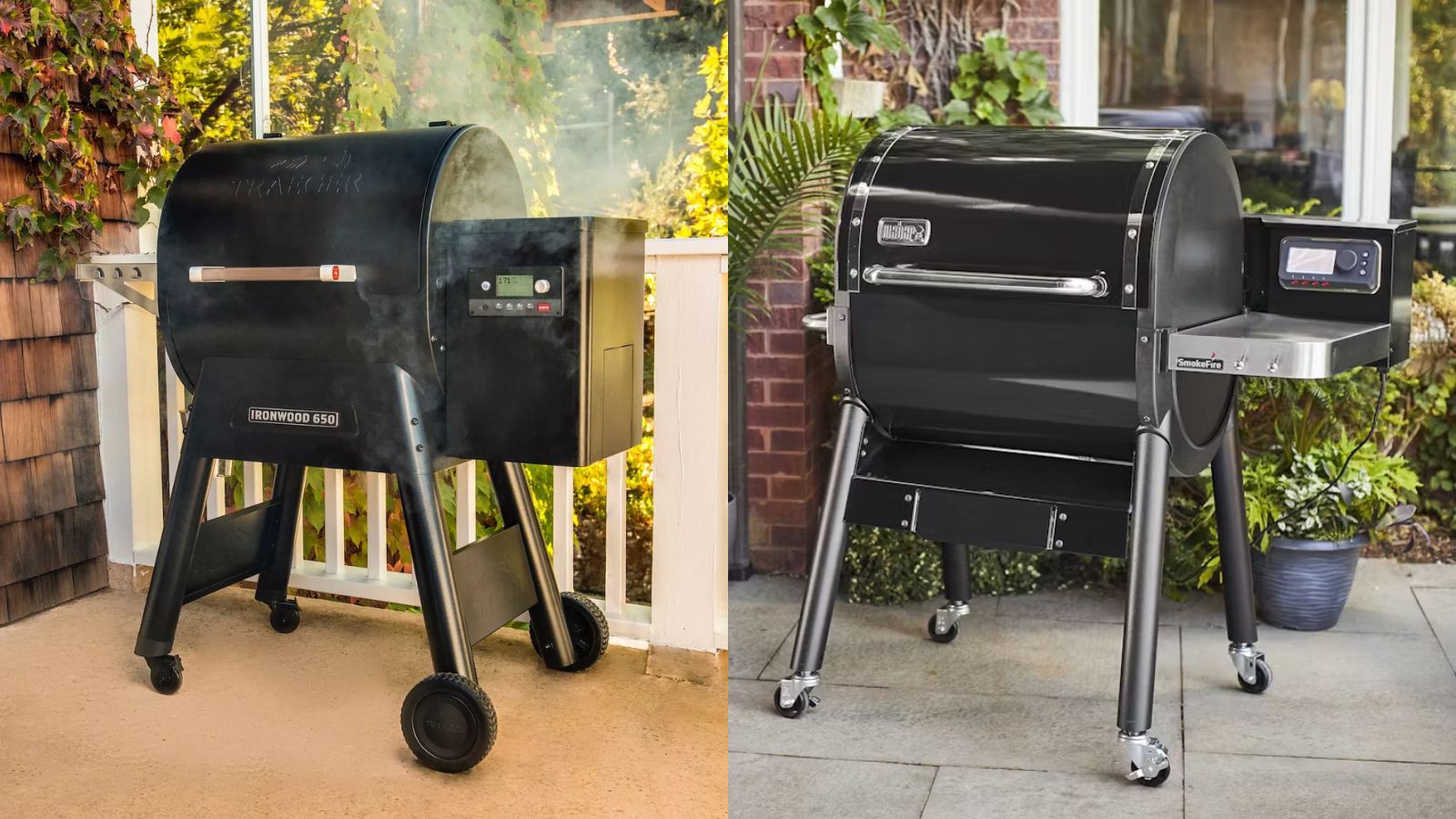 Weber vs Traeger – which pellet grill should I buy? Advice from a product tester
Weber vs Traeger – which pellet grill should I buy? Advice from a product testerThey're two titans of the grilling game, but who comes out on top between Weber vs Traeger? As a product tester, this is all you need to know about the brands
By Alex David Published
-
 Bougainvillea in miniature – with a little patience, anyone can grow these vibrant plants in bonsai form
Bougainvillea in miniature – with a little patience, anyone can grow these vibrant plants in bonsai formGrowing bougainvillea bonsai trees can add impact to even the smallest of spaces
By Thomas Rutter Published
-
 10 low maintenance, drought tolerant plants – for a beautiful and undemanding landscape
10 low maintenance, drought tolerant plants – for a beautiful and undemanding landscapeExpert plant picks for a thriving dry garden, that will make life easier and more colorful
By Jacky Parker Published
-
 How to grow eastern redbuds – the cherished native tree with striking spring blooms
How to grow eastern redbuds – the cherished native tree with striking spring bloomsAdaptable and reliable, eastern redbuds are tough trees that will not disappoint
By Thomas Rutter Published
-
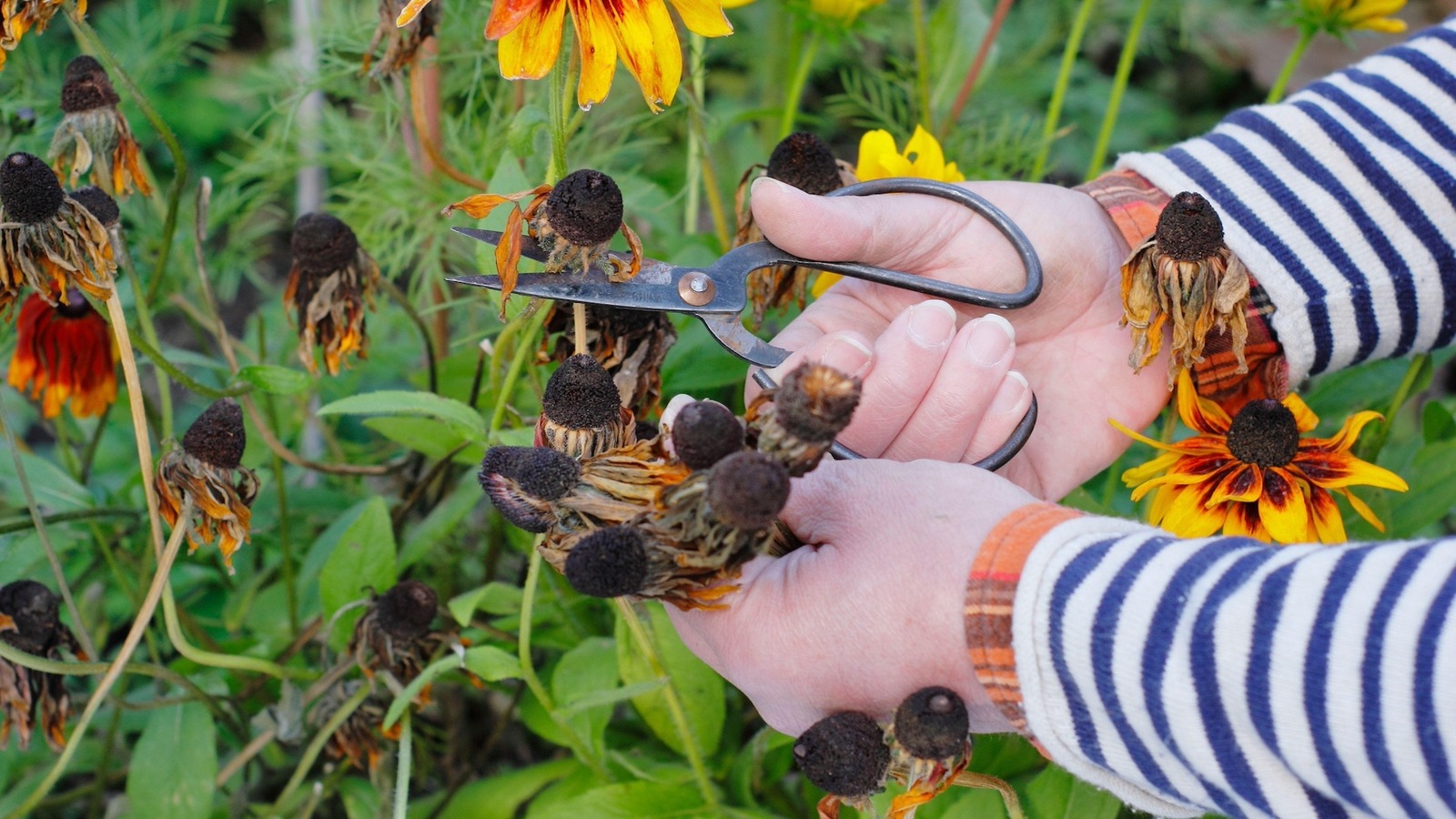 Seed storage mistakes – expert advice to help you avoid costly and accidental errors
Seed storage mistakes – expert advice to help you avoid costly and accidental errors7 expert tips that will guarantee success when you are harvesting and storing seeds
By Jacky Parker Published
